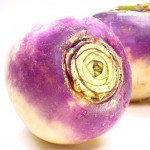Coriander is an annual herb which belongs to the family known as Apiaceae. It is a delicate hairless which generally tends to grow up to fifty centimeters or twenty inches in height. It can be found to natively grow from various regions in Southwest Asia to North Africa to South Europe. Coriander is composed of seeds as well as the leaves, which are put to various culinary and medical uses.
Coriander and cilantro are considered to be the same in most parts of the world. However, in certain countries like the United States, coriander refers to the seeds of the herb, whereas cilantro refers to the leaves and the stalk of the plant. Also, coriander may often be referred to the dry form of the herb, whereas cilantro is consumed in the fresh form.
The seeds of coriander are different in taste and fragrance as compared to cilantro leaves. The seeds tend to have a lemony and spicy aroma, whereas the leaves generally have a pungent flavor and odor.
History of Coriander/Cilantro
As discussed above coriander and cilantro were native to the Mediterranean and southwest Asia. The ancient Greeks, Romans and Egyptians used them for various medicinal and culinary purposes. One can find references about coriander/cilantro in the Bible and other sacred texts.
It can be found to flourish in dry climates with partial or full sunlight. The herb needs restricted use of fertilizer and well drained soil for effective growth as excessive nitrogen can inhibit the flavor of the leaves and also delay the seeds from ripening. The best time to harvest the leaves is when it is around eight inches tall. The best quality of cilantro leaves are bright green in color with firm stalks.
Health benefits of Coriander/Cilantro
- Cilantro or coriander leaves have been to have antibacterial properties and does act against a particular bacteria.
- Coriander seeds as well as cilantro are known to have antioxidant capabilities which can boost the immune system. Cilantro has greater antioxidant properties as compared to the seeds
- Coriander seeds have been traditionally used as a diuretic along with cumin seeds. Additionally, it also promotes the digestive process.
- Traditionally, coriander and cilantro have been used as cure for insomnia and elevated anxiety.
- Coriander and cilantro have been known to lower the cholesterol levels in the body, thereby preventing the risk to heart ailments. It is very low in saturated and trans fat, which decreases the cholesterol levels. Also, the high fiber content of coriander/cilantro helps to curb appetite which can aid weight reduction and lower the cholesterol levels. It is also very low in calorie content. Hence, the addition of coriander/cilantro in foods can not only add that flavor but will also help in limiting the calorie intake. Finally, coriander/cilantro by itself, is also low in cholesterol content which further minimizes the risk to heart ailments such as stroke, heart attack, etc.
- Animal studies have proved that coriander/cilantro has insulin-like properties and hence can be consumed to offset the effects of diabetes.
Side effects of Coriander/Cilantro
- People who are allergic to certain foods should refrain from coriander intake else it can result in allergic reactions. However, if you wish to avail the health benefits of coriander/cilantro, then one should consult a doctor before consuming the herb.
